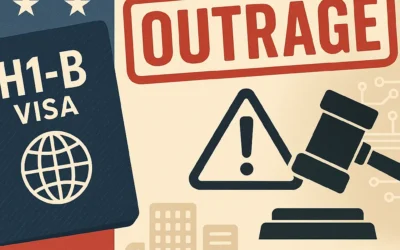In a move to combat money laundering, terrorist financing, and tax evasion, the European Union has finalized a regulation to cap cash payments at €10,000 across all 27 member states, effective from summer 2027. This landmark decision, approved by the European Parliament in April 2024 and the Council of Ministers in May 2024, aims to standardize financial regulations and increase transparency in the EU’s economy. Here’s everything you need to know about the new cash limit, its implications, and what it means for residents, businesses, and travelers.
What Is the New EU Cash Limit?
Starting in 2027, cash payments for goods and services involving businesses or professionals will be restricted to a maximum of €10,000 per transaction. This cap applies to all EU member states, harmonizing the previously fragmented rules where countries like Spain and France enforced stricter limits (€1,000) while others, like Germany and Austria, had no caps at all. Key points include:
- Exemptions: The limit does not apply to private transactions between individuals (e.g., selling a used car to a friend), provided neither party is acting in a professional capacity.
- Lower National Limits: Member states with stricter caps, such as Spain (€1,000) or Italy (€3,000), can retain their lower thresholds.
- Identification Requirements: For cash transactions between €3,000 and €10,000, businesses must verify the buyer’s identity to ensure traceability.
Additionally, travelers entering or leaving the EU with €10,000 or more in cash (or equivalent in other currencies, bonds, or gold) must declare it to customs authorities, a rule already in place but reinforced under the new regulation.
Why Is the EU Implementing This Limit?
The EU’s primary goal is to curb illicit financial activities. Cash is often used in money laundering and tax evasion due to its anonymity and lack of traceability. According to Europol, around 1% of the EU’s annual GDP is linked to suspicious financial activities. By capping large cash payments, the EU aims to:
- Reduce Money Laundering: Large cash transactions can obscure the origins of illicit funds, making it harder for authorities to track criminal activity.
- Combat Terrorist Financing: Limiting cash payments reduces the ability to fund illegal operations anonymously.
- Increase Transparency: Encouraging digital payments creates a traceable record, aiding financial oversight.
- Level the Playing Field: Harmonizing rules across member states prevents criminals from exploiting countries with lax regulations.
The regulation also includes measures to strengthen financial intelligence units and extend anti-money laundering rules to sectors like cryptocurrency providers and luxury goods traders.
How Will This Affect You?
The impact of the €10,000 cash limit depends on your role—whether you’re a consumer, business owner, or traveler. Here’s a breakdown:
For Consumers
- Minimal Impact for Most: The average cash transaction in the EU is around €25.55, far below the €10,000 threshold, so everyday purchases like groceries or dining out remain unaffected.
- Big-Ticket Purchases: If you’re planning to buy a car, jewelry, or other high-value items with cash, you’ll be limited to €10,000 unless paying digitally. In countries with lower caps (e.g., Spain’s €1,000), those stricter rules still apply.
- Privacy Concerns: Some critics argue the cap is a step toward a cashless society, raising concerns about financial privacy and dependence on digital systems. Digital payments leave a traceable record, which may worry those valuing anonymity.
For Businesses
- Compliance Requirements: Businesses must verify customer identities for cash transactions between €3,000 and €10,000, adding administrative tasks.
- Small Businesses: Micro and small enterprises, particularly in cash-heavy sectors like retail or hospitality, may face challenges adapting to the cap, especially in countries like Germany where cash payments were previously unrestricted.
- Penalties: Violating the cash limit can result in hefty fines, ranging from €250 to €225,000, depending on the country and transaction size.
For Travelers
- Declaration Rules: If you’re carrying €10,000 or more in cash (or equivalent) when entering or leaving the EU, you must declare it to customs. Failure to do so can lead to cash seizure and fines up to €5,000 or more.
- Group Travel: The €10,000 limit applies per person, so a family of four could carry up to €40,000 without declaration, provided each person carries less than €10,000.
- Intra-EU Travel: Some countries, like Germany, require verbal declarations for cash over €10,000 carried within the EU, so check local rules before traveling.
Mixed Reactions Across Europe
The €10,000 cap has sparked varied responses:
- Supporters: EU officials and financial regulators argue it’s a necessary step to protect the economy and enhance security. Countries like France and Spain, already accustomed to lower limits, see it as a natural progression.
- Critics: In cash-heavy countries like Germany and Austria, some view the cap as an infringement on financial freedom. Posts on X reflect sentiments of distrust, with users like @AndersonAfDMdEP calling it an “attack on cash” and warning of a “totalitarian future” with digital currencies. Others, like financial expert Natalia Lara, argue it’s about control, not just crime prevention, citing risks like frozen bank accounts or system outages (e.g., Spain’s April 2028 ATM blackout).
- Privacy Advocates: There’s concern that phasing out large cash payments could erode financial autonomy, especially as digital transactions are traceable and vulnerable to cyberattacks.
What Should You Do to Prepare?
With the regulation set to take effect in summer 2027, here are practical steps to stay compliant and informed:
- Check Local Rules: If you’re in a country with a lower cash limit (e.g., Spain, France, Italy), those rules still apply. Familiarize yourself with national regulations to avoid fines.
- Use Digital Payments for Large Transactions: For purchases over €10,000, opt for bank transfers, credit cards, or other traceable methods to comply with the cap.
- Declare Cash When Traveling: Always declare cash over €10,000 when crossing EU borders. Use the EU Cash Declaration Form, available in multiple languages, to avoid penalties.
- Stay Informed: Monitor updates from the European Commission or national authorities, as the regulation’s implementation may involve additional guidelines.
- Consider Privacy: If you’re concerned about digital payment traceability, keep modest cash reserves for smaller transactions, as there’s no limit on cash held at home.
The Bigger Picture: A Cashless Future?
The €10,000 cash limit is part of a broader trend toward digital payments, fueled by the rise of contactless cards, mobile apps, and cryptocurrencies. The EU insists small cash transactions will remain unaffected, but critics fear it’s a step toward phasing out physical money. This could raise challenges:
- Financial Inclusion: Not everyone has access to digital banking, particularly older generations or rural communities.
- System Vulnerabilities: Digital systems are susceptible to outages, hacks, or freezes, as seen in Spain’s 2028 ATM crisis.
- Privacy Trade-Offs: Traceable transactions enhance oversight but reduce anonymity, sparking debates about personal freedom.
Conclusion
The EU’s €10,000 cash limit, set for 2027, is a bold move to tackle financial crime and standardize regulations across member states. While it won’t disrupt most daily transactions, it will reshape how businesses and consumers handle large cash payments and cross-border travel. As the EU balances security with personal freedom, the regulation has ignited debates about privacy, control, and the future of cash.
Stay proactive by understanding your country’s rules, embracing secure payment methods, and keeping an eye on updates. Whether you see it as a necessary safeguard or a step toward a cashless society, one thing is clear: the way we use money in the EU is changing.
Read more on our blog: Investment Blog.









0 Comments